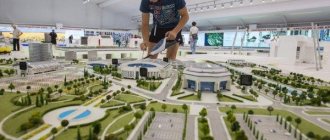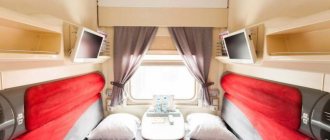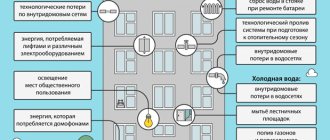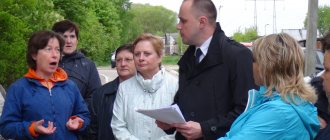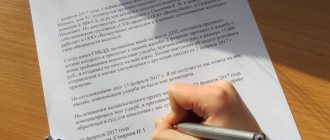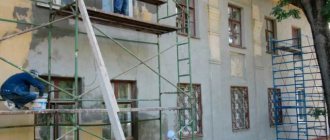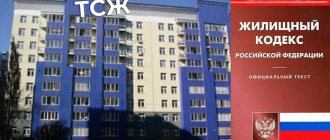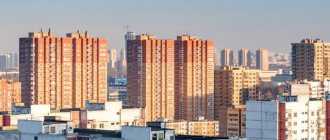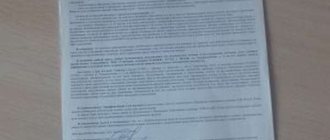What is common property and common areas in apartment buildings?
The composition of an apartment building (MKD) includes residential and non-residential premises , as well as common use (POP). The owners of non-residential buildings may be local government bodies, individuals or legal entities who have the same rights and obligations as the owners of residential buildings.
POP refers to areas located outside residential or non-residential premises and intended to serve the owners. As a generalization, the concept of common property of apartment buildings is used, which, in addition to POP, includes structures and systems designed to serve several premises, and the adjacent land plot.
The procedure for determining and the right of owners to it is regulated by Art. 289 and 290 of the Civil Code of the Russian Federation.
The register includes:
- POP : stairs and landings, elevators and elevator shafts, corridors, terraces and galleries, attic, basement, technical and service rooms.
- Structures : foundation, roof, load-bearing walls, interfloor and floor coverings, columns, windows and doors in the POP, railings and parapets.
- Engineering systems : plumbing, electrical, gas, heating, plumbing and other equipment located outdoors. General equipment includes indoor equipment, but intended to serve several owners.
- Adjacent territory : the area on which the building is located, lands for landscaping and landscaping, as well as equipment and structures located on them.
The classification and content rules were approved by Decree of the Government of the Russian Federation of August 13, 2006 No. 491.
What is common property in MKD
In accordance with Article 36 of the Housing Code of the Russian Federation (Federal Law No. 188 of December 29, 2004), joint property owned by apartment owners on the right of common shared ownership includes:
Source: freepik.com/user15245033
- landings, flights, elevators, shafts, corridors, technical floors;
- attics and basements, including for utilities;
- premises for meeting social and everyday needs: for organizing leisure time, cultural development, children's games and creativity, sports, and other events;
- roofs, load-bearing, non-load-bearing building envelopes, electrical, mechanical, sanitary equipment (including those intended to ensure unhindered access for people with disabilities to premises in apartment buildings);
- the land on which the house is located, with all elements of landscaping and landscaping;
- other objects intended for the maintenance and operation of this building and located on the specified site.
Status of the local area of a non-residential building
The territory around a non-residential building is called adjacent in legislation (GrK RF, art. 1, clause 37). This territory is not part of the owner's property.
Public spaces
Places serving more than one room in a non-residential building are auxiliary. They serve for communication between the main premises, entrance and exit from the building, and ensure the functioning of engineering systems.
Common areas (PPA) in a non-residential building are considered to be:
- corridors;
- lobbies;
- internal and fire escapes;
- elevators, shafts, etc.
The right to this property applies to all owners, i.e. each of them owns a share in the common property right.
What is the status of the building's areas and structures?
In addition to auxiliary premises, the non-residential building contains:
- bearing structures;
- roof;
- elevators;
- pipes;
- railings, etc.
If they serve more than one premises, then, regardless of location, they are joint property.
Rights are regulated by Part 1 of Article 244 of the Civil Code of the Russian Federation, and are considered as property of 2 or more persons on the basis of common ownership. It cannot be divided or changed use without the consent of all owners. If the use is carried out on a lease basis, then the owner remains the lessor. The conditions for its use may be further specified in the rental agreement.
The share in the right to common property is calculated depending on the area of the premises owned by the owner . In case of sale or inheritance, the share in the common property passes to the new owner, since it cannot be alienated separately.
The procedure for maintaining common property and adjacent territory
All management and maintenance issues are resolved in the manner established by Art. 44-48 Housing Code of the Russian Federation and Ch. 9.1 Civil Code of the Russian Federation.
In other words, the owners of premises have the right to establish rules for the use of the common property of the building, as well as the surrounding area, at a meeting. It can be carried out in full-time, correspondence or mixed form. Based on the results, a protocol is drawn up. At least 50% of the owners must be present at the meeting, and the decision is made by voting.
The requirements for maintaining the local area are similar. The maintenance of the adjacent territory is regulated by municipal landscaping rules. They indicate the rules and procedure for the participation in such events of persons responsible for the operation of the building (GrK RF, Article 55.25, Part 9).
Responsibilities for maintenance by owners of non-residential premises
According to civil legislation (Civil Code of the Russian Federation, Article 249), the owner’s responsibilities for the maintenance of common property are of a financial nature. In accordance with his share, the owner must pay taxes and fees, maintenance and insurance costs. To do this, at the meeting, operating payments are established taking into account current repairs, as well as deductions for major repairs are determined and a schedule for repair work is outlined.
Another option for participation is possible with mutual agreement of the owners, for example, cleaning the territory, holding cleanup days, etc. The maintenance of common areas must be carried out in accordance with SanPiNov and GOSTs. Engineering systems and metering devices must be in good condition , and the appearance of the building must correspond to the project.
Common areas of an apartment building
Olga!
Common areas in an apartment building based on the provisions of Art. 36 of the Code belong to the owners on the right of common shared ownership. The owners of premises in an apartment building themselves own, use and, as a rule, dispose of the common property in such a building to a limited extent.
Common areas in an apartment building are
1) premises in this house that are not parts of apartments and are intended to serve more than one room in this house, including inter-apartment landings, stairs, elevators, elevator and other shafts, corridors, technical floors, attics, basements in which there are engineering communications, other equipment serving more than one room in a given house (technical basements);
2) other premises in this house that do not belong to individual owners and are intended to meet the social and everyday needs of the owners of premises in this house, including premises intended for organizing their leisure time, cultural development, children's creativity, physical education and sports and similar events;
3) roofs enclosing load-bearing and non-load-bearing structures of a given house, mechanical, electrical, sanitary and other equipment located in a given house outside or inside the premises and serving more than one room;
4) the land plot on which this house is located, with elements of landscaping and improvement, other objects intended for the maintenance, operation and improvement of this house and located on the specified land plot.
It is forbidden to place things, building materials, etc. on staircases - this is prohibited by fire safety rules and sanitary standards. The Housing Code of the Russian Federation does not directly contain such a rule, but it states that the owners of premises are obliged to comply with the rules for maintaining common property. You can initially contact your management company with this problem (the appeal must be in writing), it will issue an order to eliminate the violations. If citizens do not respond, then they should contact the Housing Inspectorate, which can bring the owner to administrative responsibility and impose a fine. The Housing Inspectorate will also consider your appeal regarding the inaction of officials of the management company.
Should the owner pay for the elevator and other general building needs?
In accordance with clause 1 of article 39 and clause 1 of article 158 of the Housing Code of the Russian Federation, the owner of non-residential premises in an apartment building is obliged to pay his own utilities and operating costs, as well as a share in payments for the maintenance of the house, incl. payments for major repairs. Read more about the rules for paying utility bills for non-residential premises of an apartment building here.
This requirement is established regardless of whether the owner uses this property and premises, even if there is a separate entrance. For example, he is obliged to pay for the elevator, despite the fact that he is located on the 1st floor. Any benefits and special conditions can be established only by decision of the general meeting.
Adjacent territory of an apartment building
Giving the adjacent plot of land a special status is necessary to implement the following functions:
- formation of a territorial structure, that is, division into functional zones, thanks to which residents of the house can realize their needs guaranteed by law;
- control by homeowners to ensure that the land is used in accordance with its intended purpose;
- implementation of the obligation of citizens living in the house to jointly maintain the local area in proper condition.
Content
Responsibility for maintaining the local area in proper condition lies entirely with the property owners, who must control the following points:
- cleaning the area, including removing snow;
- arrangement of areas for children to relax and play;
- construction of fences with mandatory consideration of the interests of residents of nearby buildings;
- arrangement of sites for collection and subsequent removal of waste;
- arrangement of parking areas;
- planting vegetation and its subsequent care;
- construction of buildings necessary for a comfortable life and their planned repairs.
Improvement
In accordance with the law, the costs associated with landscaping the adjacent area fall on the shoulders of the residents of this house. Often people do this voluntarily, without spending additional money on paying hired workers.
At the municipal expense, only sanitary cleaning of the territory and cutting down of trees in disrepair is carried out.
Cleaning
The rules and regulations for the operation of the housing stock clearly state who should clean the local area.
In particular, cleaning the site and the passage between multi-storey buildings is the responsibility of the management company, while cleaning the road in the block should be carried out by a specialized enterprise.
Parking rules
When organizing a parking zone near a multi-story building, it is necessary to comply with all safety requirements and sanitary standards. In particular, it should be located at a distance of at least 10 meters from the walls of the house.
Access of unauthorized vehicles to the local area may be limited by decision of the general meeting of residents.
However, this cannot apply to the transport of emergency and emergency services, which must have free access to the territory when the need arises.
Installation of a barrier
The law allows for the possibility of installing a barrier at the entrance to the local area, subject to the following conditions:
- unimpeded access to the territory is maintained for fire department employees and ambulance workers, as well as employees of enterprises that maintain utility lines;
- no inconvenience is created for residents of neighboring houses;
- entry/exit adjustment is carried out constantly, regardless of the time of day.
Before installing a barrier, it is mandatory to obtain appropriate permission from the state architectural and construction supervision. Otherwise, its construction will be declared illegal and the structure will be demolished.
Find out about the list of works for major repairs of apartment buildings. What are the rules for maintaining property in an apartment building? See here.
Payment for the use of common property of an apartment building
Payment for the maintenance of common property by the owner of the real estate is made according to the rules and tariffs established for owners of residential apartments. They are calculated by the management company and adopted at a meeting of residents. The transfer is carried out on the basis of a payment received from the management company for operating expenses , as well as separately for major repairs.
The payment includes the following items:
- costs for lighting POP;
- maintenance of intercoms and special equipment (including an amplifier for a common television antenna);
- heating POP;
- maintaining cleanliness;
- landscaping;
- arrangement and maintenance of children's playgrounds;
- elevator maintenance;
- maintenance of the house boiler room (if any);
- expenses for current repairs.
Read more about what major and current repairs of non-residential premises are, and whether owners should pay for them, in a separate article.
The costs of garbage collection are taken out of operating costs and are paid for as a separate payment. The work schedule and costs for current repairs are established by a meeting of residents annually or once every 3 years.
How to draw up an agreement for the financial participation of the owner?
An agreement for the maintenance of non-residential premises in an apartment building is drawn up between its owner and the HOA.
The purpose of the agreement is to clarify the owner’s participation in the ownership of common property and the use of engineering and technical equipment to receive utilities.
There is no mandatory form of the contract, but it is recommended to include such sections in it:
- Information about the contracting parties, names, addresses.
- Description. A complete list of common property is provided that the owner has the right to use and in the maintenance of which he must participate.
- The essence of the subject of the contract. The owner undertakes to participate in the maintenance, and the HOA undertakes to provide certain actions for the maintenance of non-residential premises. You can include the following items:
- representation by the Partnership of the owner’s interests in service organizations and government agencies;
- concluding contracts on behalf of the owner;
- representation of interests in court;
- control over the provision of public services;
- assistance in registration of production and insurance.
- Rights and obligations of the contracting parties. The HOA can be entrusted with:
- conclusion of an agreement with the management company;
determination of tariffs for property maintenance and repairs;
- control over payments;
- compiling a register and monitoring its condition;
- ensuring sanitary and fire safety measures;
- accumulation of funds for major repairs.
At the same time, the HOA is obliged to:
- ensure the normal functioning of common property and energy supply of non-residential premises;
- respond to the owner's claims;
- ensure equal rights of the owner with other residents of the apartment building;
- assist in eliminating the consequences of accidents and identifying the causes.
In turn, the owner has the right:
- dispose of the premises at your own discretion;
- participate in the general meeting of the HOA;
- receive the necessary information;
- appeal unlawful decisions.
At the same time, he is obliged:
- treat common property with care;
- do not use it for your own interests to the detriment of other owners;
- carry out the decisions of the general meeting;
- do not violate the rights of residents;
- pay invoices for property maintenance on time;
- provide free access to metering devices;
- comply with all safety requirements.
We do not recommend completing the documents yourself. Save time - contact our lawyers by phone:
+7 (499) 938-90-71Moscow
The agreement is drawn up in 2 copies and signed by authorized persons of both parties.
There are many nuances and rules associated with the use and ownership of non-residential real estate. Our experts have prepared answers to the most pressing questions:
- How to draw up a flood report?
- How to conclude an agreement with an office cleaner?
- How are tariffs determined and payments for electricity and heating calculated?
- What is the management of non-residential premises and how to conclude an agreement with the management company, HOA, housing cooperative, between the owners?
- What are the nuances of maintenance and resource supply?
HOA claims regarding the use of local area.
The HOA failed to protect the owners from the use of the local area by unauthorized persons.
This partnership united several apartment buildings. The land plots under and around the houses were registered as common shared ownership. There was a store on the adjacent plot, the tenant of which used the plots of the owners of the premises in the apartment building for the passage of vehicles to the store building.
According to the HOA, such actions violate the rights of the owners, since the transport bringing goods to the store destroys the blind area and asphalt covering of the courtyard area and causes damage to property belonging to the owners. In addition, transport creates a danger to the lives of children playing in yards and harms health due to exhaust gases.
With this justification, the partnership appealed to the arbitration court (case No. A53-32857/18), where it asked to prohibit the use of the local area for the purpose of organizing the access of freight and passenger vehicles to the store building and for parking.
However, the courts rejected the partnership.
Responsibility for refusal to pay for one-time tax in MKD
Refusal to pay for the maintenance of non-residential premises is considered an administrative offense. Responsibility for it is provided for by Part 14 of Article 155 of the RF Housing Code. The management company or HOA has every right to file a claim in court, and by its decision it can demand payment by levying a penalty on the owner’s property (movable or immovable). Control over the execution of the decision is entrusted to the bailiffs.
Owners of non-residential premises in residential or detached non-residential buildings have the full right to use common property. In this case, the share principle applies. In this case, there is an important condition - the owner must pay in full the amount due to him for the costs of maintaining the property. Payment is made regardless of use.
